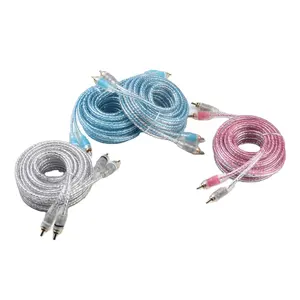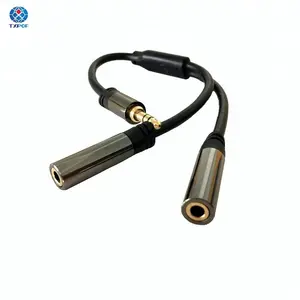Exploring the Versatility of 3.5mm Jack Audio Cables
The 3.5mm jack audio cable stands as a universal standard in connecting a wide array of audio devices. This ubiquitous connector facilitates the transmission of audio signals between devices, serving as a critical component in personal and professional audio setups. The 3.5mm jack, also known as a 3.5 mm audio jack or jack 3.5 mm, is a compact and versatile interface that has maintained its relevance in an ever-evolving digital landscape.
Types and Compatibility
There is a diverse range of 3.5mm jack audio cables available, each designed to meet specific connectivity needs. From 3.5 to 3.5 mm audio cables that connect similar devices, to 3.5 mm jack to RCA cables that bridge the gap between differing audio ports, the variety ensures compatibility across devices. Whether it's linking an MP3 player to a car stereo with an audio jack to audio jack cable, or connecting a home theater with a 3.5 mm aux to RCA cable, these cables adapt to various audio environments.
Construction and Materials
The construction of a 3.5mm jack audio cable is a testament to its durability and performance. Typically, these cables are constructed with a combination of materials like nylon fiber for flexibility, and tinned copper mesh shielding to prevent signal interference. The external jacket, often made of PVC, provides a robust layer of protection against wear and tear. This meticulous design ensures that the 3.5 millimeter audio cable not only withstands diverse conditions but also maintains signal integrity for clear audio transmission.
Features and Advantages
One of the key features of the 3.5mm jack audio cable is its shielding, which is crucial in minimizing electromagnetic interference (EMI) and radio-frequency interference (RFI). This is particularly important in environments where multiple devices may introduce noise and distort the audio signal. Additionally, the flexibility of these cables allows for easy routing and installation in tight spaces, making them a practical choice for complex setups. The 3.5 mm TRS (Tip, Ring, Sleeve) configuration is another aspect that contributes to the cable's widespread use, providing a balanced connection that is less susceptible to noise and interference.
Applications and Uses
The applications for 3.5mm jack audio cables are extensive, ranging from professional audio equipment connections to everyday consumer electronics. They are essential for DJs and musicians who often use XLR to 3.5 mm cables for microphones and audio interfaces. In home entertainment systems, 3.5 mm cables are commonly used to connect audio sources to speakers. For those in need of connecting professional audio gear, XLR female to 3.5 mm cables provide a reliable link between devices.
Conclusion
In conclusion, the 3.5mm jack audio cable is a cornerstone in the realm of audio connectivity, offering a reliable and high-quality link between a multitude of devices. Its enduring design, coupled with a wide range of types and features, ensures that it remains an indispensable tool for audio professionals and enthusiasts alike. As the world of audio continues to evolve, the 3.5mm jack stands firm as a connector that users can count on for their diverse audio needs.











































 浙公网安备 33010002000092号
浙公网安备 33010002000092号 浙B2-20120091-4
浙B2-20120091-4